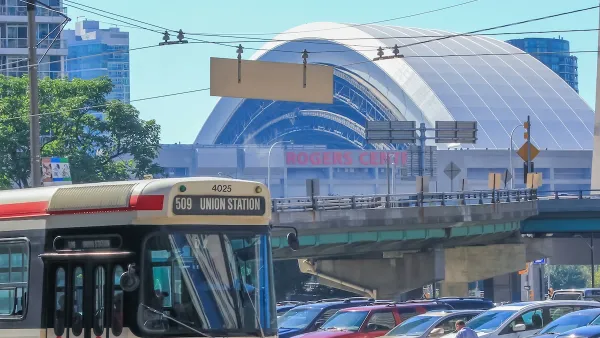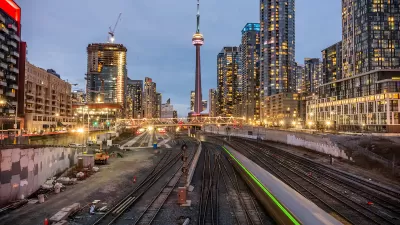Toronto, a land of cheap gas and unclear traffic reduction policies, has a long way to go in improving public transit, according to one architect. But designers are making progress as they make city's new subway stations as enticing as possible.
"As a Londoner and an architect, Will Alsop has a lot to say about public transit.
He's one of those rare birds who both uses transit and designs it. These days, his attention is focused on Toronto, where he's doing two stations on the Spadina subway extension, Steeles and Finch.
In town for a series of briefings with the TTC, Alsop says he likes what he's hearing. The commission's engineers have, he says, "provided very useful feedback."
According to the peripatetic Alsop, "They all want these stations to be exceptional. Every station will be different; they're not taking a corporate approach where everything has the same look."
His goal, he explains, will be to introduce as much light and air as possible into structures that are essentially enormous concrete boxes buried 15 metres underground. He also uses the word "joy" when talking about his stations; it is, he insists, a quality he hopes will be experienced by future passengers.
God knows, that in itself would be a remarkable achievement, and appropriate given that in the decades ahead Torontonians will rely on transit a lot more."
FULL STORY: We're still playing catch-up on public transit

Maui's Vacation Rental Debate Turns Ugly
Verbal attacks, misinformation campaigns and fistfights plague a high-stakes debate to convert thousands of vacation rentals into long-term housing.

Planetizen Federal Action Tracker
A weekly monitor of how Trump’s orders and actions are impacting planners and planning in America.

Chicago’s Ghost Rails
Just beneath the surface of the modern city lie the remnants of its expansive early 20th-century streetcar system.

Bend, Oregon Zoning Reforms Prioritize Small-Scale Housing
The city altered its zoning code to allow multi-family housing and eliminated parking mandates citywide.

Amtrak Cutting Jobs, Funding to High-Speed Rail
The agency plans to cut 10 percent of its workforce and has confirmed it will not fund new high-speed rail projects.

LA Denies Basic Services to Unhoused Residents
The city has repeatedly failed to respond to requests for trash pickup at encampment sites, and eliminated a program that provided mobile showers and toilets.
Urban Design for Planners 1: Software Tools
This six-course series explores essential urban design concepts using open source software and equips planners with the tools they need to participate fully in the urban design process.
Planning for Universal Design
Learn the tools for implementing Universal Design in planning regulations.
planning NEXT
Appalachian Highlands Housing Partners
Mpact (founded as Rail~Volution)
City of Camden Redevelopment Agency
City of Astoria
City of Portland
City of Laramie





























